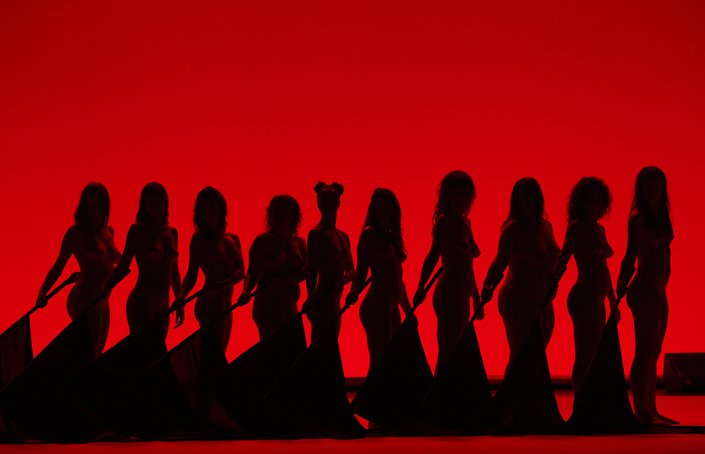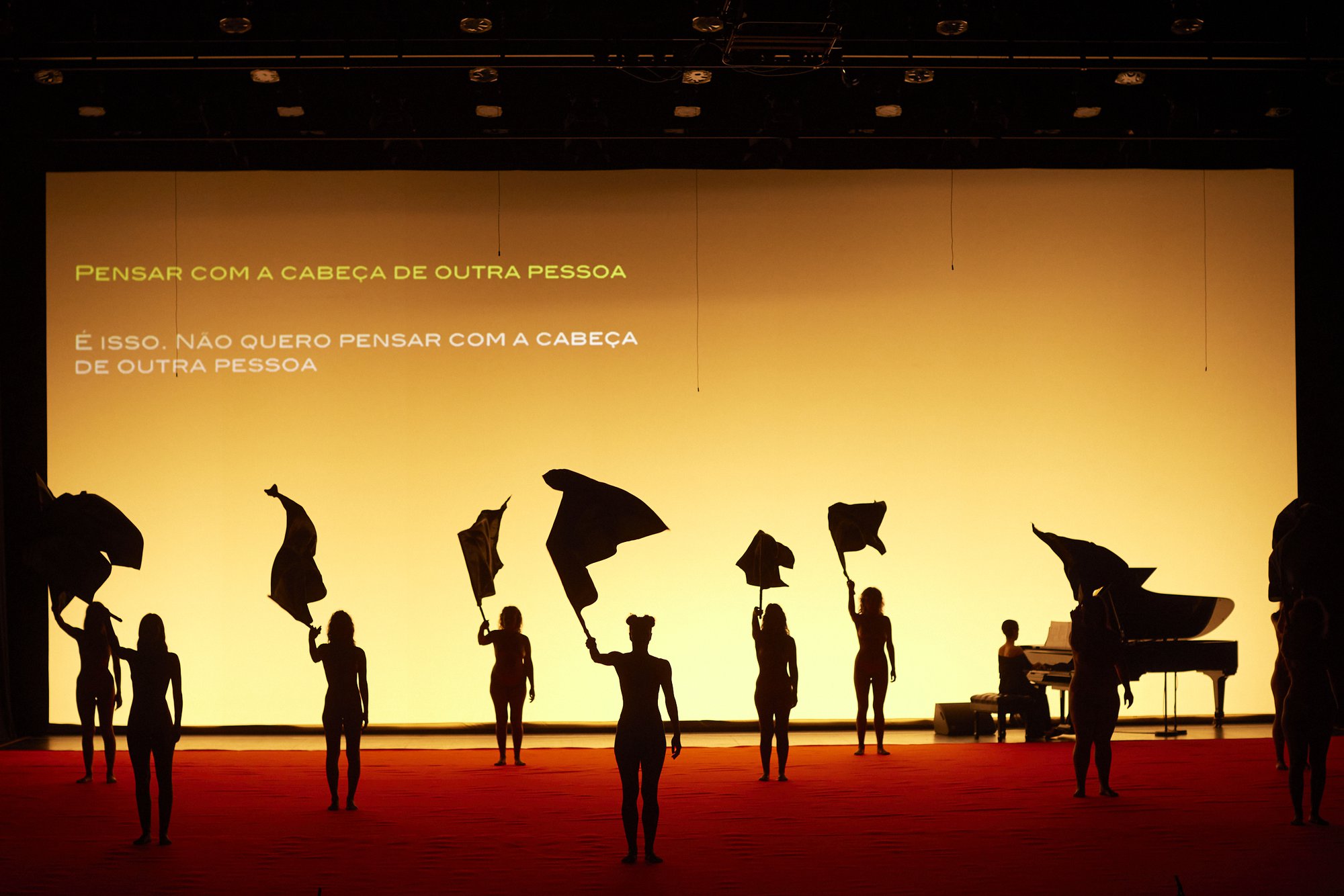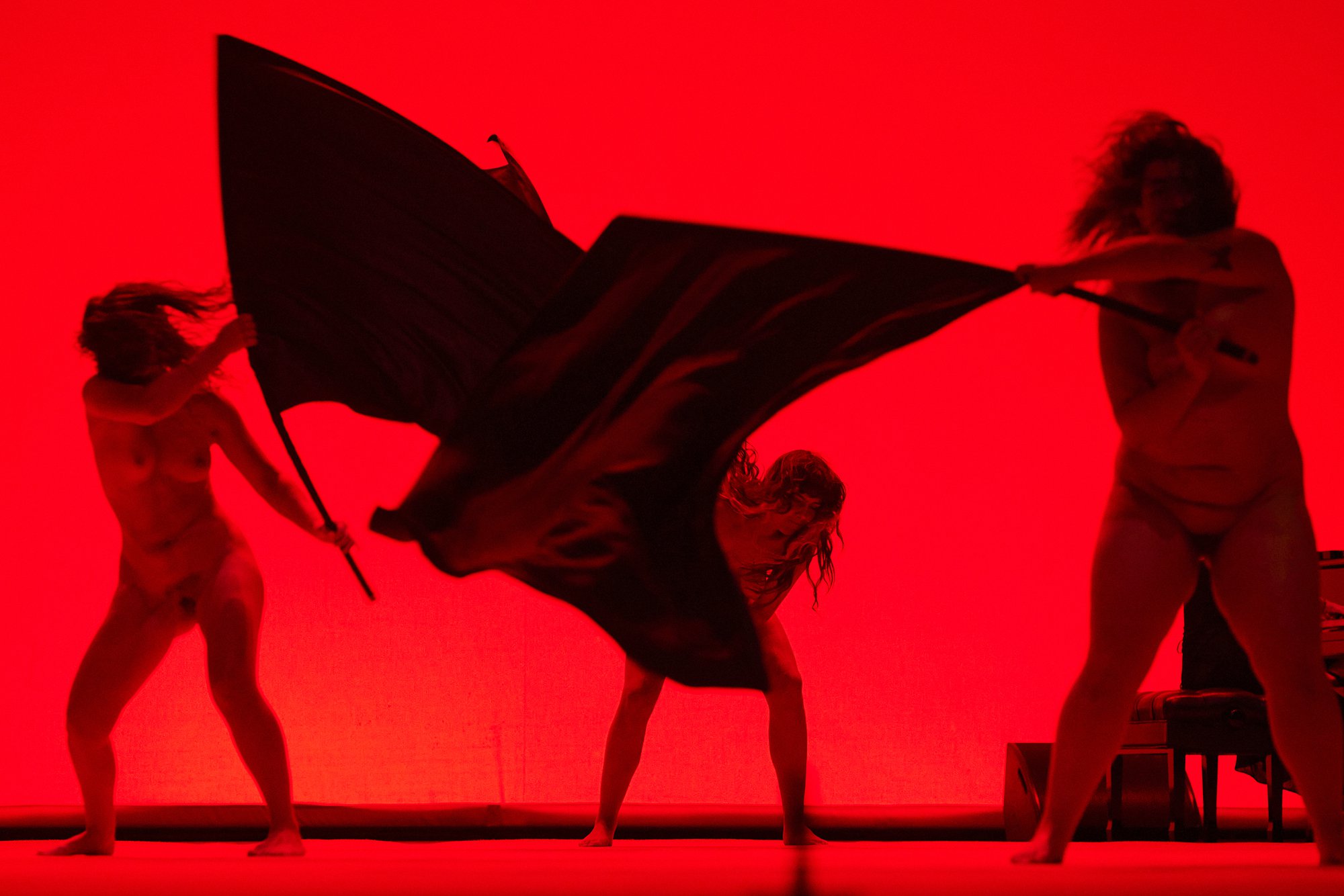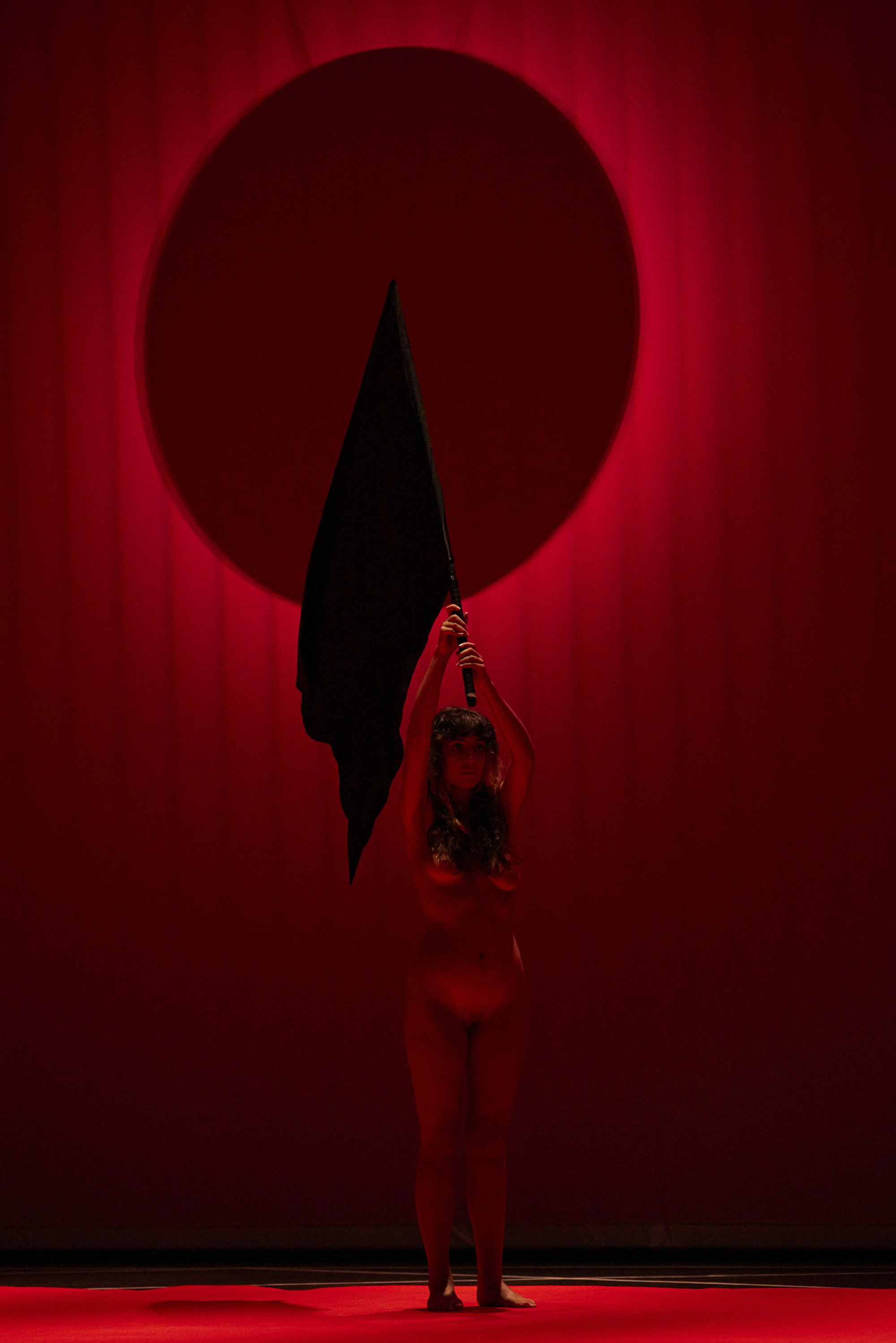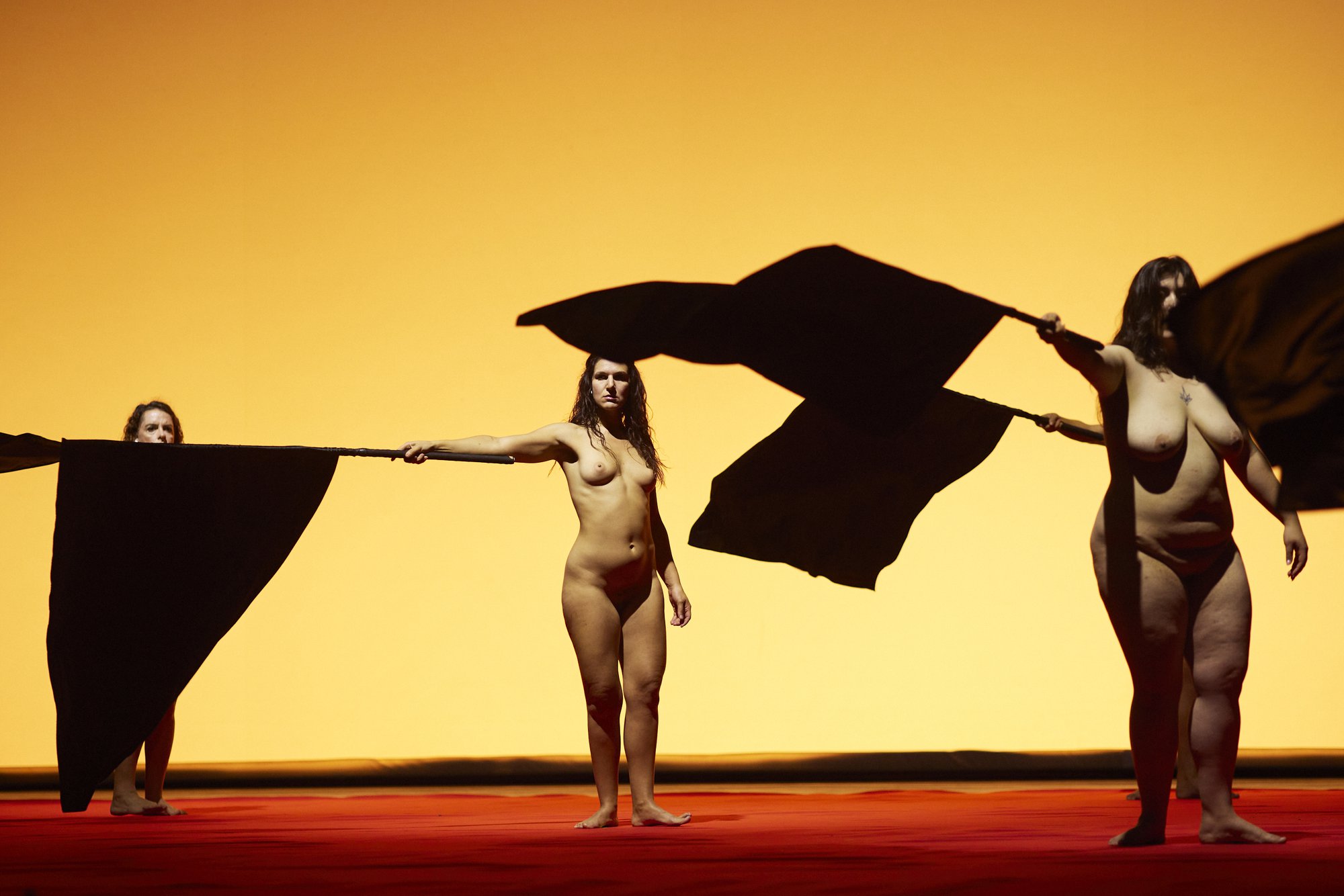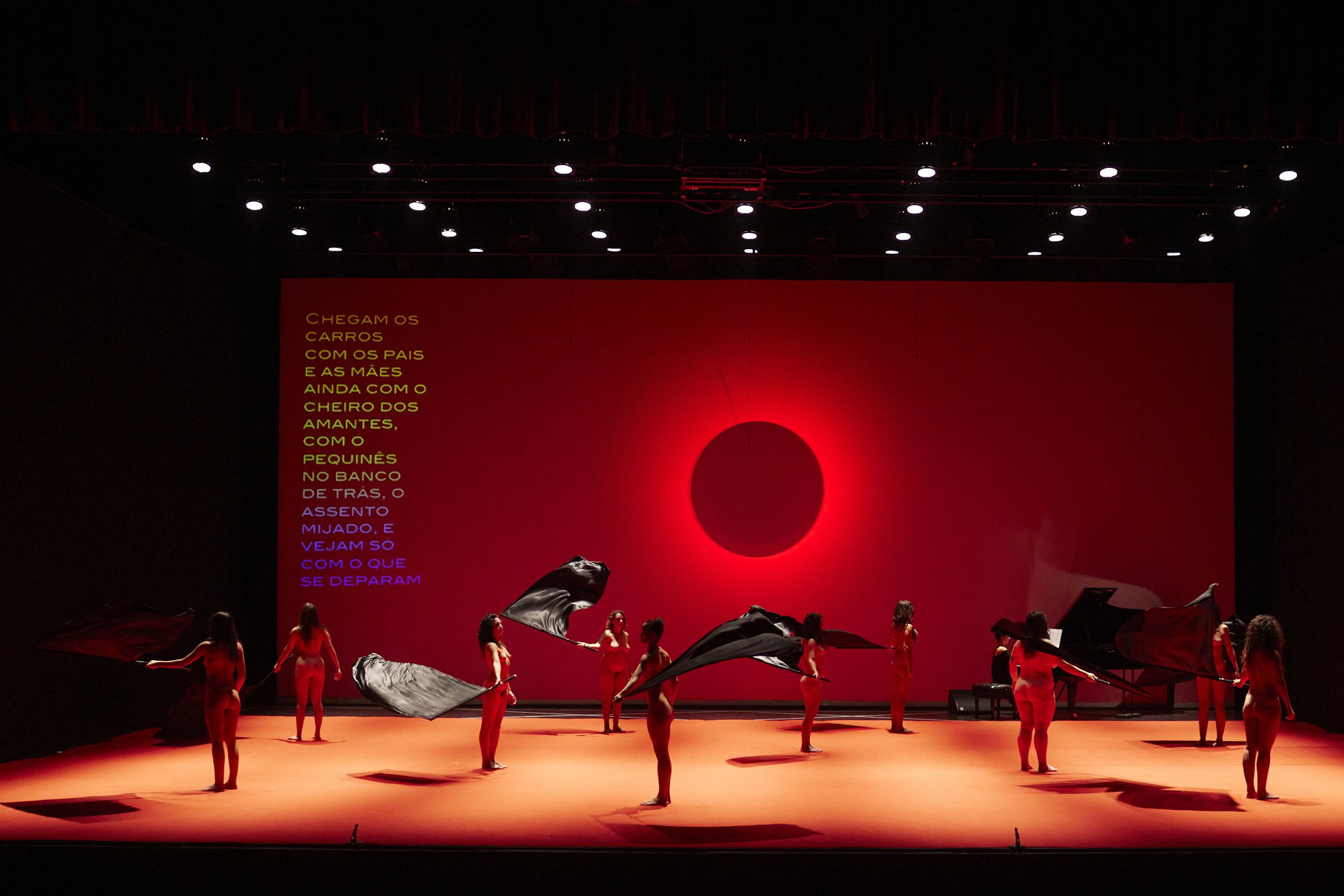"Louise Michel é sobre rejeitar pensar com a cabeça dos outros. É sobre a escola, uma outra escola, que ative o pensamento crítico. É sobre o empoderamento feminino, daí o título que nomeia a primeira mulher a levar uma bandeira negra para uma manifestação em nome da não rendição".
Cláudia Galhós, Expresso
Deviam ter ficado em casa seus anormais
Thinking with someone else's head.
That's it. I don't want to think with someone else's head.
I've had a hard time thinking with someone else's head all my life.
Or to put it another way:
I hate living thinking about what other people what others want me to think, what others like, what others dislike.
Before I do anything, before I lift a finger, I think about what others will think.
To live thinking of others is the same as living for others.
To live for another is to think with another's head. All your life.
To constantly take the other into account. What does it cost me to constantly take into account the other person all the time.
Of the ten commandments, the first is "Thou shall not take the other into account".
Who does not have half their life made up for others?
Half of one's life is spent for the sake of others. Through the fault of others.
That's what I call thinking with the other's head.
Applying the prejudices of others to your steps, incorporating them, making them yours and, what's more, without even realising it.
A life designed with other people's neurons almost without realising it
A domesticated life, limited in rebellion.
And the rebellions are called "the best moments of my life".
When in fact they are always unimportant matters.
Insignificant matters.
Crushed by the weight on your shoulders of heads that don't belong to you. Heads of parents, grandparents, neighbours.
Heads of friends, of charcutiers, of sports columnists, of writers.
When the other's head takes the place of my head, to make them understand, to make them understand what I feel, it's like this: it's a head cut off at the neck, placed on my headless body my headless body where they have left a remnant of a neck.
It is necessary to join the two pieces of neck together. The one that is glued to my body and the neck that they left glued to the other's head.
It is a comic image, because they do not fit together well: the size of the neck that belongs to the severed head is bigger than the hole that they left in my body when they cut off my head to put in the other's head.
So the head doesn't go in, it doesn't go in.
I have to push it in, press the flesh against the flesh, and the flesh of the neck is very soft.
It's soft.
Then I try to screw the other's head to my headless body
that is, to take the other's head with my two hands and screw it to me.
I press it on myself and make it turn to the right, to screw it on.
You, tomorrow, go to school and propose this.
You get there and propose that all the children swap heads each other. That they start to think with each other's heads.
That they practice.
The more you practice, the less you suffer.
Because practicing is preparing for the future.
That way you get used to what awaits you: a whole life thinking with someone else's head.
Promise me you'll do that? Of course you will.
You get to school and in gym class you say: "I have an exercise for all of you, it's called: Start thinking with the other person's head.
And it consists of us switching heads. That's right. What does it consist of? Swapping heads.
Let's go in the yard, so we don't make a mess on the school because of the blood - and we start practicing.
Assistants' heads, teachers' heads, headmistresses' heads, the cafeteria owner's head and many, many hundreds of little children's heads,
little heads like yours, one on top of the other.
And in front of the mountain of heads, a few meters away, like the actors in the bows, the headless bodies: the ones that have lost their heads.
The exercise is that the bodies go and get a head from that mountain.
As they cannot see, because they have no head, it is very difficult for them to find their original head.
There is a very small chance that they will find their own head. That's why it's a didactic exercise:
because it prepares you for the life you're going to have later on.
The race of bodies looking for a head begins when the gym teacher blows his whistle.
The gym teacher reaches into the pocket of his green tracksuit and takes out the whistle.
It's a nice, silver whistle, he squeezes it between his fingers, raises his hand slowly, everyone is ready and, when he takes the whistle to his mouth he realises that he has no mouth.
He wants to put it in his mouth, but he can't.
He can't take it into his mouth because it has no head
It's a headless body.
So he throws the whistle more or less towards the pile of heads in front of him so that some of them will whistle.
It's a silly move, very funny, because without a head you lose your balance quite a bit.
He throws the whistle at the pile of skulls, so that any mouth of any head blows, picks up the whistle with its teeth from the floor or the front of other heads and blow
It goes "piiiii" and begins the exercise.
What a painful exercise, to think with another's head.
But didactic.
The whistle goes "piiiii" and, when you hear it, all the decapitated bodies will rummage through the mound, the bagatelle of heads, looking for their or any other.
But nobody moves.
The head that has the whistle will blow up.
It goes "piiiii" three hundred times.
But the bodies don't listen, the exercise has gone wrong because the bodies don't have heads.
They can't hear.
The heads, huddled next to the whistling head, will go deaf.
You have to see the suffering expression of the severed heads, because of the fucking whistle.
The bodies end up getting bored, start to disperse, stumble over each other.
But it is infinitely healthier to stumble like this, a stumble without a head, than a stumble for thinking with the head of the other.
The worst stumbles, I have given them by thinking with other's head.
Repeat after me:
"The worst stumbles, I have given them by thinking with the other's head.”
And one thing is to get along with each other,
another thing is to have them fuck with your life.
Many of the headless bodies start walking and take the mountain of skulls in front of them.
They fall on top, smash a nose here, an ear there, pick up the first head they find and try to screw it on.
One kid picks up a little girl's head and screws it on himself.
He can see now.
He sees that he's in front of a crowd of heads that are watching him and saying:
"Me! Me!".
The boy, who was not satisfied with the girl's head, chose, from the mountain of skulls, the one he liked the most and, with a swift movement, unscrews the head he had, throws it to the ground and searches like a madman in the direction his body remembers, the head he saw and liked the most.
In the army my friend Óscar thought with other people’s heads.
He did everything with other people's heads.
Even the bullet shot.
At the moment he received the bullet in his head, at that moment, the head of the other, of what had been placed in front of him, ceased to be the other's head.
When there was a millimeter before the bullet sank into his head, his head became his own again for a moment.
In the instant of receiving the bullet in his head and dying two seconds later.
Two seconds of his life with his own head.
And what good did it do him?
To die.
And what I laugh at this travesty of defective bodies, what I laugh at, how they bump into each other.
Kathud! They collide. And they fell.
Kathud!
In the primary schoolyard.
And the heads screaming to their bodies:
"Here, here!"
Children of all ages. Helpers. Janitors. Security guards.
...Wrong way again.
They went the wrong way when they had a head.
And they're going the wrong way now.
Heads for the wrong way. Legs for the wrong way.
Great news, when we should all know by now the famous phrase:
"Any path chosen is a wrong path.”
Because any path is a path walked, chosen, by one body with the other's head.
Because any path is a path found, because no one has created his own path.
We choose paths, we never open our own paths.
And in the schoolyard, soaked in blood, bodies pick their heads blindly, and others go against a wall, trying to jump the fence and go into the street.
Going into the street like that, headless, is even more pathetic – though perhaps more dignified - than going into the streets with the heads of others.
A headless girl walks through a street of tall trees, with a sun that does not caress her hair but her legs, and a girl's legs are as beautiful or more beautiful than her hair, because with the years the hair remains more or less the same, but the legs fall apart until it is almost impossible to caress them with pleasure.
All of us who want to be caressed, pleasantly or not, should, in exchange, caress, pleasantly or not, the one who will caress us later.
You have to experiment with whoever it is until you get a good caress, and so on.
And I see the headless girl under the trees, and I remember my first kiss, and I shudder.
At seven in the afternoon, the parents come to pick up their children at the school gate.
Parents, mothers and their pets.
Mothers who have just had sex with a guy, and fathers who have just had sex with a chick. Dads and mums in cars. And in the cars, the pets.
Chihuahuas, Pekingese. Those nasty, little white things with teeth, little black things that look at you.
The cars arrive with the mums and dads still smelling of their lovers, with the pekinese in the back seat, the seat pissed on, and look what they come across.
The bloody courtyard. The pile of heads. The drifting bodies. Tripping, falling.
We need to move the kids to another school
You have to look for the child's body, look for the child's head and move the child to another school.
A mother picks her son's head from the pile of heads and goes screaming Mikey, Mikey, after a body, seeing if it's his.
But anarchy leads nowhere.
So the parents improvise a parents' meeting.
They can't stop looking at the bodies of their offspring and at the completely separated heads of their cubs.
And the bodies of the teaching staff and the bodies of the headless staff and their heads in the middle of the heads of the kids' heads, all mixed up together.
Not to mention the blood.
Because a body separated a short time ago from a head doesn't stop bleeding, and a head recently separated from a body doesn't stop bleeding.
And people say they suffer. Because they have been forced to act in a way they didn't want to act.
They were forced to do things they didn't want to do. And they blame others. Because others told them what to do.
Because others thought with someone else's head, or for someone else's head, or with someone else's ideas, or paid by someone else, or whatever.
And the parents' meeting, which lasts a few seconds, decides, by a hundred and fifty votes to one, to decapitate each other and mix their heads with the other heads or, as they say, throw more wood on the fire.
And they decide how to do it, also in a few seconds, and the way they choose, again a hundred and fifty votes against one, is nothing less than slapping.
And in a few seconds they all start slapping. And heads fly. One hundred and fifty heads all flying.
And the heads against, also flying.
And the heads of the dogs, flying.
Now, in the blood-soaked schoolyard, heads of all kinds and bodies of all kinds mingle: of parents with puppies' heads, of puppies with children's heads, and it's all very, very beautiful.
Because it is the proof they need to understand that it is enough to live and die thinking with the head of the other.
And the head of the headmistress of the school, embedded in the body of a chihuahua, says to the head of a parent, embedded in the body of a little girl:
"We are going to expel your son from school. For making this mess."
"No one knows who set up the mess. You are the one making a mess."
Then there is sexual abuse, which is never abuse: it is an occasion not missed.
What do you mean, occasions not missed?
If it's men with girls. If it's women with boys. If it's boys with men. If it’s girls with girls.
No, sir. These are bodies of boys with heads of women sexually abusing bodies of dogs with heads of teachers.
No sir, these are bodies of Chihuahuas penetrated by bodies of liberal parents with heads of coward fascists.
No way, these are birdie's shit heads with birdie's bodies,
bumping into each other against the maladjusted, the winners finally clashing against the losers, but here there is no winner who does not have a loser's head.
Except here there is no winner without the head of a loser, and no loser without the head of a winner.
So, those who claimed equality already have it: an amorphous equality.
And those who were claiming order freak out, because they see that order is now much greater; that in order for there to be order, it is better to have the order that already existed.
I’ve always told you that the consequences of thinking with someone else's head were fatal for humanity
and that humanity could never get rid of that.
And that you would get away with it.
You have to choose between leaving or staying and changing everything.
You have to choose between leaving for good slip away or staying and changing everything.
I've always told you:
You'll think with your head, even though they try to slap it out of you. You must run away if you have to. Like me. When I was a kid. With the speakers stolen from my school, sweating crossing the football field, jumping a fence. With people following me and following me. And the difference between me and the others is that my body carries my head.
- Resume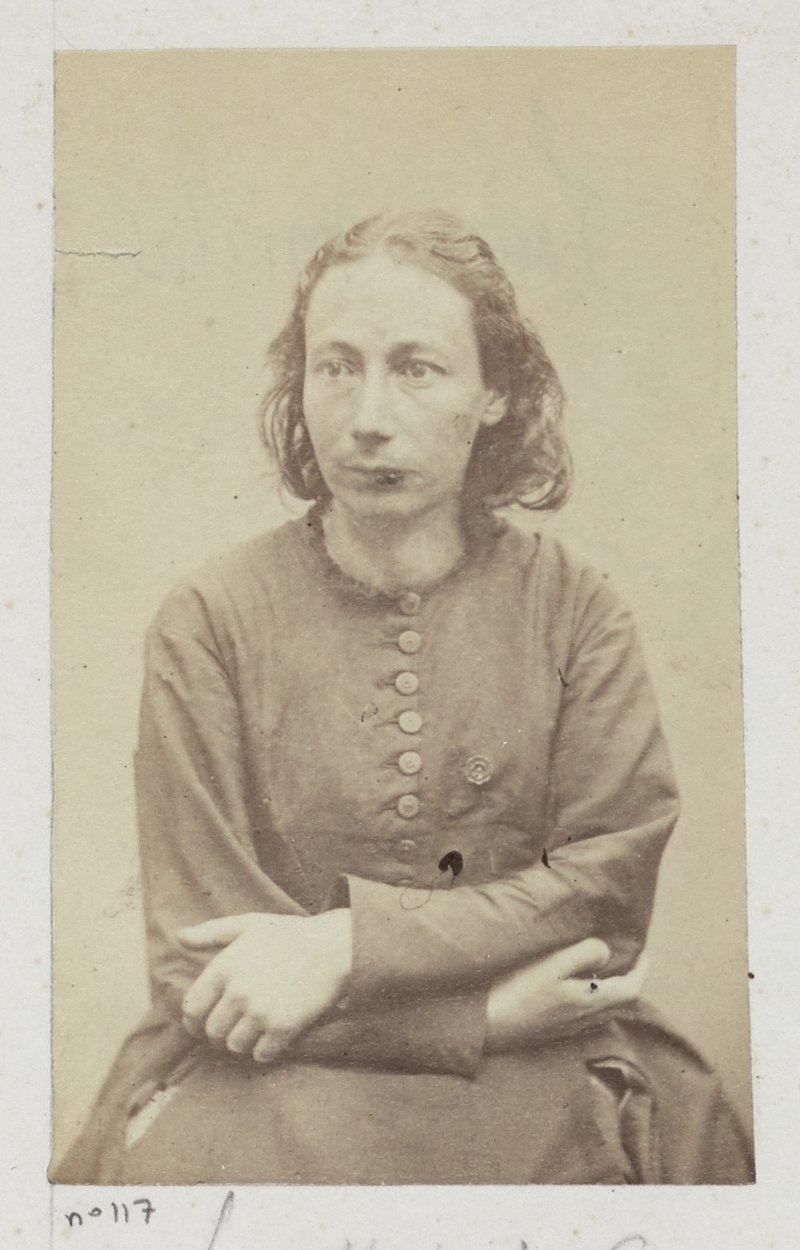

LOUISE MICHEL
“Escravo é o proletário, escravo acima de todos é a mulher do proletário."
in Memoirs
Louise Michel (1830-1905) foi professora, poetisa, enfermeira e escritora. Foi uma das mais importantes figuras da Comuna de Paris em 1971. A primeira mulher a içar a bandeira negra como símbolo dos ideais libertários e do movimento anarquista.
Deu aulas em Paris e aos 26 anos era já autora de uma extensa obra literária, política e educacional vocacionada nos movimentos sociais revolucionários. Durante a Comuna de Paris participou na linha da frente até ser detida e deportada para a Nova Caledónia - colónia francesa situada no Oceano Pacífico. Regressou a França em 1880 onde veio a participar em inúmeros eventos e reuniões operárias. Foi presa diversas vezes pelo ativismo político.
Em 1886 viu publicada a obra pela qual ficaria mais reconhecida Memoirs, uma autobiografia crítica da sociedade capitalista e materializa-se num testamento político e público de uma mulher que deixa o relato da sua vida como militante revolucionária. Após a sua morte continuou a ser homenageada como uma das mulheres centrais dos movimentos anarquista, feminista, sindicalista do século XIX.
A propósito de mulheres a fazer a revolução
> Ação do coletivo feminista Chileno Las Tesis no dia Internacional para a eliminação da violência contra as mulheres, a 25 de novembro de 2019, em Santiago do Chile. Cantaram “un violador en tu camino” e dançavam contra o femicídio exigindo uma ação do governo mais efetiva.
FICHA TÉCNICA
FOTOGRAFIA
Vasco Célio
SOM
Ana Borralho e João Galante
EDIÇÃO
Carolina Luz
REVISÃO CONTEÚDOS
Catarina Medina
DESIGN E WEBSITE
Studio Maria João Macedo & Queo
